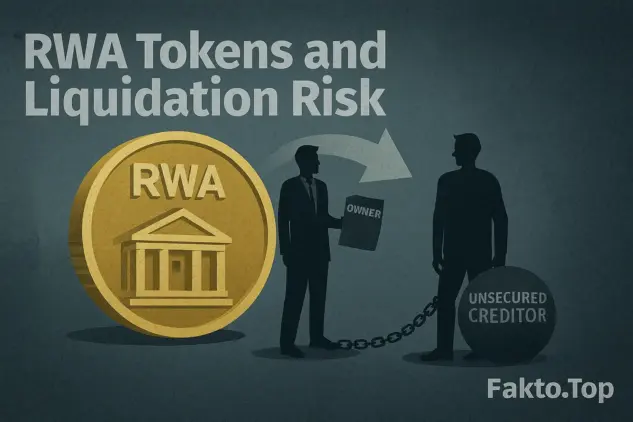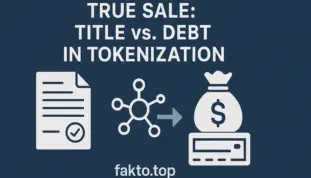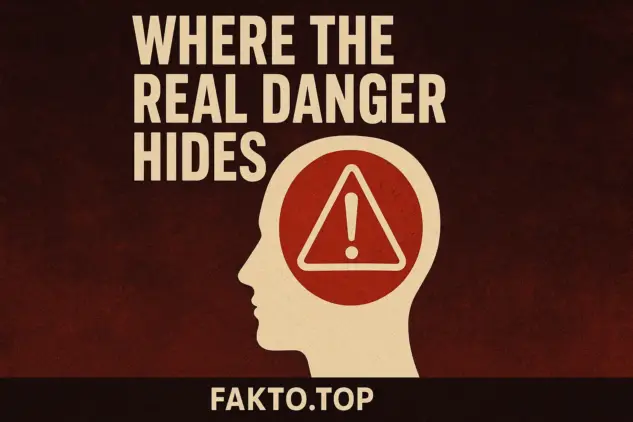RWA Liquidation Priority: Owner or Creditor When Protocol Fails?
RWA Tokens and Liquidation Risk: Are You an Owner or an Unsecured Creditor?
Real-world asset (RWA) tokenization is often marketed as a breakthrough in DeFi safety. But beneath the surface lies a legal paradox that many investors overlook. The true risk isn’t the asset itself defaulting—such as the U.S. Treasury failing to honor T-Bills—but the protocol that tokenized the asset becoming insolvent. In such a scenario, the central question becomes: Does your RWA token represent legal ownership of the underlying asset, or is it merely an unsecured IOU issued by a failing platform?

This distinction is not academic—it determines whether you stand first in line during liquidation or last among unsecured creditors. Institutional investors structure their exposure to ensure legal title and bankruptcy protection. Retail participants, however, often rely on marketing language and interface design, unaware that their token may not confer ownership at all.
Understanding this divide requires analyzing the legal architecture behind tokenized assets—especially the role of SPVs and the concept of True Sale. These mechanisms are borrowed from traditional securitization and are essential to making RWA tokens truly “bankruptcy remote.” For a deeper dive into how yield and safety interact in RWA protocols, see analyzing RWA yield vs. safety.
True Sale and the SPV: The RWA’s Legal Shield
To mitigate RWA liquidation risk, protocols must isolate the asset from their own operational liabilities. This separation is achieved through two foundational legal constructs: the Special Purpose Vehicle (SPV) and the True Sale. Without both, tokenized asset default becomes a real possibility, and RWA token bankruptcy risk increases dramatically.
The SPV (Special Purpose Vehicle) Framework
An SPV is a legally distinct entity created solely to hold the underlying asset—such as a Treasury Bill or a real estate deed. Its purpose is to remain bankruptcy remote, meaning it cannot be pulled into the insolvency proceedings of the protocol that minted the token. For this to work, the SPV must be the actual legal owner of the asset, and its operations must be independent of the crypto platform. This structure is common in traditional finance, where securitized claims are shielded from the originator’s balance sheet.
True Sale: Title vs. Debt in Tokenization
True Sale is the legal mechanism that determines whether the asset has been fully and irrevocably transferred to the SPV. In traditional finance, this is a cornerstone of securitization. If a court deems the transfer a True Sale, the token holder has a direct claim to the asset via the SPV. However, if the transfer is interpreted as a secured loan—where the asset remains on the originator’s balance sheet—the token holder becomes an unsecured creditor in the event of bankruptcy.

This distinction is critical. Without a True Sale, the SPV may not be recognized as the legal owner, and the tokenized asset may be pulled into insolvency proceedings. In such cases, fiduciary duty crypto protections, custody agreement RWA terms, and securitized claim structures may offer little recourse. The investor’s standing depends entirely on whether the token represents title transfer or debt exposure.
| Token Structure | Legal Title | Bankruptcy Risk | Investor Standing |
|---|---|---|---|
| SPV + True Sale | Transferred to SPV | Low (Bankruptcy Remote) | Asset Owner |
| SPV + Secured Loan | Retained by Originator | High (Asset May Be Claimed) | Unsecured Creditor |
| No SPV, Direct Protocol Mint | Unclear or Absent | Very High | Unsecured Creditor |
The Two Failure Scenarios: Where the Real Danger Hides
When evaluating RWA liquidation risk, many investors instinctively worry about the underlying asset defaulting. But in today’s market, that’s rarely the real threat. The far more practical—and painful—danger is protocol insolvency. Tokenized asset default is often a distraction from the deeper issue: what happens when the platform itself collapses?

In such moments, the difference between being a legal owner and an unsecured creditor becomes painfully real. And unless the token structure includes a verified True Sale and a bankruptcy remote SPV, the investor may find themselves trapped in a slow, expensive legal process with no guaranteed recovery.
Scenario 1: Underlying Asset Default
Let’s start with the low-probability case. If the underlying asset—say, a government bond or corporate note—defaults, the token acts as a securitized claim against the asset’s cash flow. Recovery depends on the asset’s legal structure and jurisdiction. But in most cases, especially with sovereign debt, the odds of default are minimal. This is not where the real danger hides.
Scenario 2: Issuer Protocol Insolvency (Highest Risk)
This is the scenario that keeps legal analysts up at night. If the protocol that issued the RWA token goes bankrupt, and there’s no verified True Sale, the token holder loses their preferred status. They become just another unsecured creditor, waiting in line behind lawyers, liquidators, and senior claims. The process is slow, expensive, and often opaque.
Worse, many DeFi protocols operate without fiduciary duty. There’s no legal obligation to act in the investor’s best interest. Without a clear custody agreement or legal wrapper, the investor may have no enforceable claim at all. In this scenario, the token’s promise of ownership evaporates—and all that remains is a hope for partial recovery.
Due Diligence Checklist: Three Documents You Must Read
So how can you protect yourself? The answer is simple, but powerful: read the documents. Legal engineering is the foundation of RWA safety, and you don’t need a law degree to spot the red flags. Below are the three documents every investor must review before trusting a tokenized asset.

The Legal Wrapper and Trust Agreement
Start here. Look for the terms “True Sale” and “SPV” in the offering documentation. These are not marketing buzzwords—they are legal signals. If the documents clearly state that the asset was sold to an SPV via a True Sale, that’s a strong indicator of legal protection. If the language instead refers to a “secured loan,” or if the documents are not publicly available, consider it a major risk. For more on the future of the 40T RWA market, see our deep dive.
Custody Agreement and KYC Mandates
Custody matters. A proper custody agreement defines who holds the asset and under what conditions. It should also include KYC/AML mandates. These aren’t just regulatory hurdles—they’re legal tools. In court, proving ownership often depends on whether the investor passed KYC and was properly onboarded. Without this, even a well-structured token may fail to confer legal title. For more on RWA legal classification and the Howey Test, explore our regulatory analysis.
| Document | What to Look For | Red Flags |
|---|---|---|
| Trust Agreement / Legal Wrapper | “True Sale”, “SPV”, asset isolation | “Secured loan”, no public access |
| Custody Agreement | Named custodian, asset location | Unclear custody terms, no jurisdiction |
| KYC/AML Documentation | Investor onboarding, compliance | No KYC, anonymous issuance |
Conclusion
RWA safety isn’t about the rating of the underlying bond—it’s about the legal architecture that surrounds it. A AAA-rated asset means little if the token structure fails to confer ownership. Investors must go beyond the interface and marketing to verify the legal reality of their holdings. That means reading the documents, understanding the structure, and asking hard questions.
At fakto.top, we believe in cutting through the hype. Our mission is to empower investors with the tools and insights to navigate the legal terrain of digital asset ownership. Because in the end, safety is engineered—not assumed.
Disclaimer
This content is for analytical purposes only and does not constitute legal, tax, or financial advice. Readers must consult with licensed professionals before making any investment decisions.
